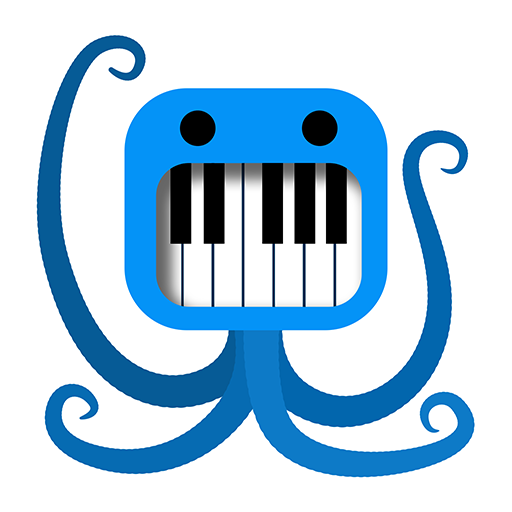Touchpad

Touch-controlled pad which can be used to control multiple values simultaneously:
Slide your fingers in the x- and y-axis, change the touch radius or touch pressure (if your device supports it), and change the distance of between your fingers in the x- and y-direction to change the values.
Or tap on the pad area to arpeggiate through notes that are sent into it from other modules.
Ports:

The Touchpad will arpeggiate through the notes or chords sent into this port.
If Velocity Port is selected as the velocity input source, the velocity value is taken from whatever value is sent to this port.
The notes generated when tapping on the Touchpad will be sent out through the MIDIOut port.
If only one finger is on the Touchpad, then sliding left and right will control this x-value.
Range: 0.0 - 1.0
If only one finger is on the Touchpad, then sliding up and down will control this y-value.
Range: 0.0 - 1.0
If two or more fingers are on the Touchpad, then sliding left and right will control this x-multi-value.
Range: 0.0 - 1.0
If two or more fingers are on the Touchpad, then sliding up and down will control this y-multi-value.
Range: 0.0 - 1.0
Increase the touch pressure to increase this value. The maximum pressure of all active touches is used.
Only available on devices that support touch pressure (newer iOS devices do not have 3D Touch support anymore).
Range: 0.0 - 1.0
Increase the touch radius to increase this value. The maximum radius of all active touches is used.
The touch radius can be increased by decreasing the angle between your finger and the device. Radius is not as accurate as touch pressure and on iOS only has around 5 steps from 0.0 to 1.0, but still works nicely with most instruments.
Range: 0.0 - 1.0
This value can be controlled by increasing the distance between your fingers on the Touchpad. This uses the maximum distance between the fingers in the x-direction.
Range: 0.0 - 1.0
This value can be controlled by increasing the distance between your fingers on the Touchpad. This uses the maximum distance between the fingers in the y-direction.
Range: 0.0 - 1.0
Settings:
Name: Change the name of this so that you can identify it if you have multiple controls.
Velocity Input Source: Select how the velocity of Note-On and Note-Offs should be computed. Possible values:
Fixed: A fixed, selectable velocity.
Accelerometer: The current accelerometer values are used to approximate how much the device has moved when the touch started.
Y-Axis: Largest velocity at the top The higher up on the key that you touch, the more velocity the note will have.
Y-Axis: Largest velocity at the bottom The largest velocity is at the bottom of the keys, and on top are the lowest velocities.
Velocity Port: The velocity is taken from the velocity input port.
Velocity: The (fixed) velocity of the generated MIDI events, if Fixed is selected as the Velocity Input Source.
Arpeggiator Pattern Type: Which arpeggiator pattern (up, down, up-down, all...) should be played based on the notes sent into the noteIn port.
Note tapping: If you already have a finger on a button, it usually doesn't trigger again when adding another finger to it, until all fingers are removed from it. When note tapping is enabled, then every time a finger goes down on the Touchpad, a new note is being played. This way you can play notes quicker when tapping on the Touchpad.

